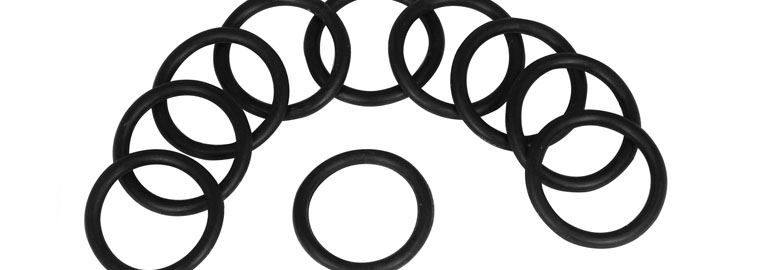What is O-Ring?

O-rings are used in a variety of applications to stop fluid and gas leaks. In hydraulic and pneumatic systems, they are frequently used to seal connections and stop leaks. O-rings are also utilised in consumer goods to produce a watertight seal, such as garden hoses and faucets.
Selecting the appropriate O-rings is crucial. They are used for sealing purposes and are also called toric joints. O-rings have a circular, o-shaped design with a round cross-section, living up to their name. They can be fastened around the mating surfaces of gas or liquid passages. O-rings come in a variety of types even though they all have a similar design. Here are five factors to think about when selecting O-rings.
We, Gasco INC, are one of the best O Rings Supplier In India. We provide a selection of O Rings. In addition, we offer gland packings, O rings, seal rings, and gaskets. We are ISO-certified and provide the highest-quality products. O Rings, also referred to as packing or toric joints, are made by Gasco INC for industrial use and can withstand the worst conditions. Both static and dynamic applications are compatible with it in both situations.
Things to Consider When Choosing O-Rings
- PSI Rating: How much pressure an O-ring can withstand without leaking is measured in pounds-per-square (PSI). Applications requiring sealing use all types of O-rings. They are utilised to seal the interlocking surfaces of pipes, hoses, and other passages that transport pressurised materials. Make sure the O-rings you choose have a PSI rating high enough to prevent leaks when making your selection.
- Internal Diameter: When selecting O-rings, you should take the internal diameter into account. The distance between an O-ring’s two widest points is known as internal diameter. It essentially mimics an O-ring’s size. An O-ring’s internal diameter needs to fit the passages it will be used with. For example, the internal diameter of an O-ring sealing a pipe must be about the same size as the pipe. It won’t fit if it’s too big or small, at least not without leaking.
- Cross Section: When selecting O-rings, you should also consider the cross section size in addition to internal diameter. What precisely is the cross section? An O-ring’s thickness is referred to as its cross section. You can turn an O-ring on its side and gauge the thickness of the O-ring to determine its cross section. Usually, a larger cross section will provide better leak protection. However, the cross section must still allow for the passages that it uses. To make sure O-rings fit, you must take the cross section into account.
- Material: Different materials are used to make O-rings. Rubber is used to make some of them. Other O-rings are constructed from more sophisticated substances like thermoplastic or polyethylene. Of course, different materials have different properties. They can all stop leaks in fluids and gases. But each one’s characteristics are unique. Consider the material and whether it is appropriate for your sealing application when selecting O-rings.
- Hardness: When selecting O-rings, don’t forget to take hardness into account. A Shore A Durometer is typically used to measure hardness. An O-ring with a hardness rating of 40 is considered to be relatively soft, whereas one with a hardness rating of 90 is considered to be relatively hard.
O-rings are frequently found in pumps, cylinders, connectors, and valves where they function to seal gaps between different parts and stop the leakage of fluids and gases. They are a particularly adaptable solution to a typical engineering challenge because they can be used with static, dynamic, hydraulic, and pneumatic components.
Product Source : O Rings Manufacturers In India
You May Also Like: Gasket Manufacturers in Chennai and Gasket Suppliers in Saudi Arabia

